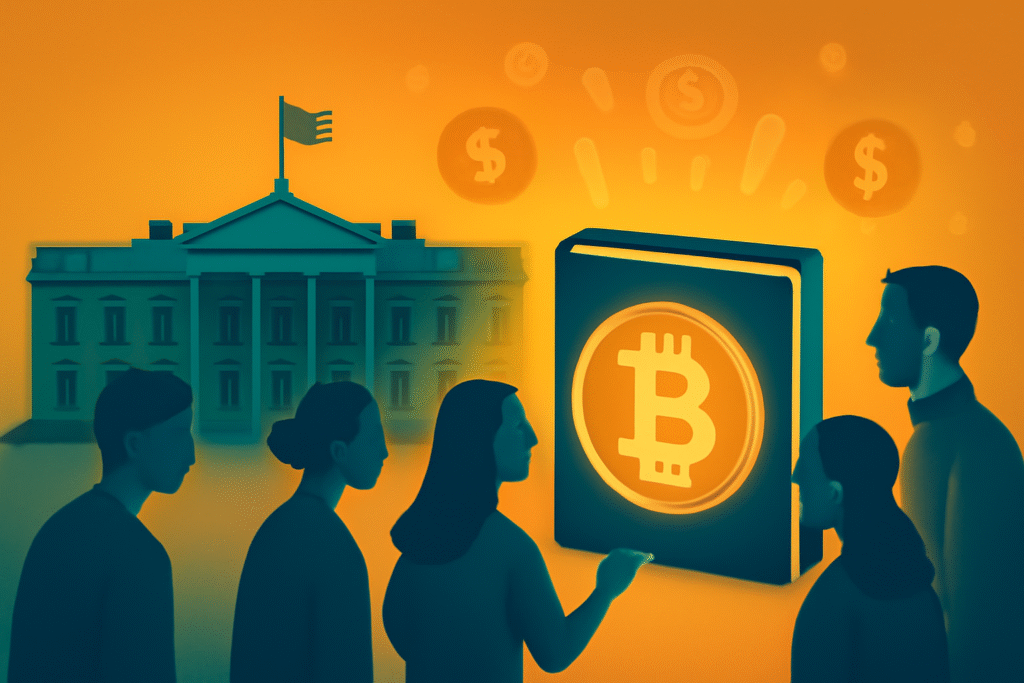Quick Takeaways:
- The White House “crypto Bible” is the biggest game plan yet for digital assets in the U.S..
- It sets rules for stablecoins, crypto banking, and proposes a government Bitcoin reserve.
- The roadmap is here, but most rules still need to be turned into action by agencies and Congress.
So, the White House finally dropped its big “crypto policy Bible,” and the whole crypto world is buzzing. Maybe you’re hearing the phrase everywhere and thinking, Wait, the White House wrote a Bible about Bitcoin? Relax, nobody’s passing out verses in pews. This so-called “Bible” is basically a 160-page playbook on how the U.S. government wants to handle digital coins, tokens, and blockchain tech moving forward.
Let’s break down what’s inside, using plain language and a healthy dose of real talk.
Why Is Everyone Calling It a “Crypto Bible”?
People in the industry started calling it the “Bible” because it’s the most complete rulebook the U.S. government has published on crypto. It covers everything: how stablecoins should work, what counts as a legal crypto company, new tax guidelines, banking access, even the wild idea of the government holding their own stash of Bitcoin—kind of like Fort Knox, but for digital money. The report will pretty much guide all government crypto rules for the next few years.
Where Did This Come From?
All of this started when President Trump signed a couple of orders back in January and March 2025—one scrubbing the last administration’s crypto plans, the other kicking off a working group to sort out how America should “win at crypto”. They brought in government, industry folks, and some crypto diehards to hash things out in endless meetings. The result? This new “Bible.”
What’s Actually in It?
- Regulations for Stablecoins: The report lays out firm rules—if you want to issue a stablecoin (think digital dollars like USDC), you gotta prove you’ve got cash in the bank to back it up, dollar for token. No more wild rides with unbacked coins.
- No Fed Coin, Period: The White House put its foot down—there won’t be any U.S. central bank digital dollar. That ship has sailed, for now.
- Banking for Crypto Companies: There’s a push to stop banks from unfairly shutting out crypto firms (“Operation Choke Point 2.0” got the axe), making it way easier for legit crypto startups to open accounts and get insurance.
- Digital Asset Reserve: The government is building a so-called “Strategic Bitcoin Reserve.” That means the feds will hold onto a pile of bitcoin (and a mix of other coins they get from forfeiture or seizures), almost like a digital gold reserve. Some folks say this makes sense, others call it nuts.
- Clearer Tax Rules: The IRS is working up new crypto tax guidance, so if you mine, stake, or just buy coffee with crypto, the paperwork should get less confusing.
- Faster DeFi Innovation: The rules call for “regulatory sandboxes”—testing zones where new crypto startups and DeFi projects can experiment legally without having to jump through dozens of hoops.
Why Should I Care?
Even if you’re not day-trading Ethereum at midnight, these rules could affect:
- How easy it is for you to use crypto at your bank or in an app.
- How many scammy coins get weeded out (thanks to stronger stablecoin standards).
- Whether the U.S. keeps up with crypto—and doesn’t get left behind by Europe or Asia’s tech moves.
- How confusing (or simple) it’ll be to report your crypto taxes next April.
If you want a real-world comparison, think back to how banks got FDIC insurance a hundred years ago. It made people trust banks and put their savings in—now, the “Bible” is supposed to do the same for crypto. Whether or not it actually works, well, that’s the next big question.
What’s Missing?
Some industry folks say the “Bible” has big gaps. The actual details on how much crypto the government will hold, or what kind of coins they’ll buy, are still fuzzy. A lot of the report is more like a blueprint or wish list; you won’t see every change overnight. Lawmakers and agencies still need to vote on a bunch of things, so expect more horse-trading before the dust settles.
Final Thoughts
Honestly, it’s a huge moment. America finally has a roadmap for crypto. But—as with any government document—don’t expect fireworks right away. Sometimes, progress is more like watching grass grow than a Michael Bay movie. Still, for the first time, the rules of the game are coming into focus, and that’s something nobody in crypto can ignore.


